When it comes to the wilderness, bears rank high on the list of animals that can be potentially dangerous. But not all bear species are the same when it comes to their level of threat to humans. Let’s dive into the key question: Which bear is the most dangerous?

There are several types of bears across the globe, but the most well-known species with reputations for being dangerous are the grizzly bear, polar bear, and black bear. Here’s a look at each type and what makes them dangerous—or not.
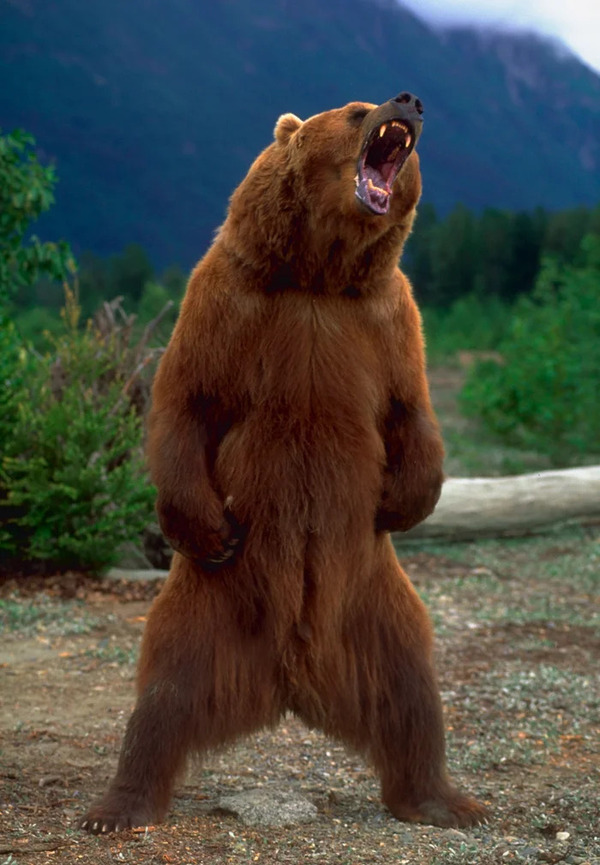
Grizzly bears are a subspecies of the brown bear, found mainly in North America. They’re known for their characteristic humped back, long claws, and aggressive nature. Grizzlies tend to be more territorial than other bears, and this makes them prone to defensive attacks, especially if they feel their cubs or space are threatened.
Size and strength: Grizzlies can weigh up to 800 pounds, with a body built for power.
Temperament: Known to be aggressive when surprised or threatened.
Typical encounters: Most dangerous when surprised or with cubs nearby.
Conclusion: Grizzly bears are often considered the most dangerous bear in North America due to their size, strength, and protective nature.
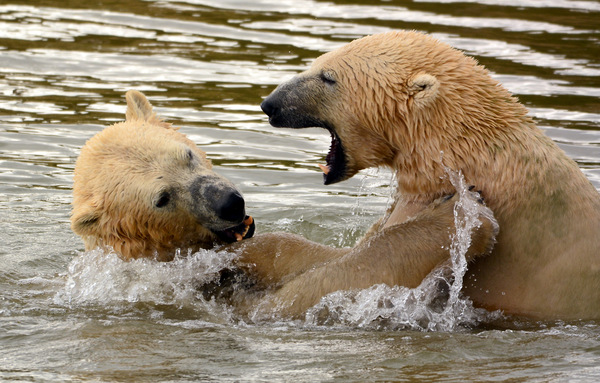
Polar bears live in the Arctic and are the largest bear species. Unlike most bears, which eat plants as well as meat, polar bears are primarily carnivorous and adapted to hunt seals. This makes them skilled predators, and they have been known to see humans as prey in rare circumstances.
Size and strength: Polar bears can weigh over 1,500 pounds, making them the largest and one of the most powerful bear species.
Temperament: They are not usually aggressive, but their predatory instincts make them potentially dangerous, especially in a food-scarce environment.
Typical encounters: Polar bears have been known to stalk humans in rare cases, especially when food is scarce.
Conclusion: Polar bears are considered highly dangerous in the Arctic. Their size, predatory skills, and sheer strength make them capable of serious harm.
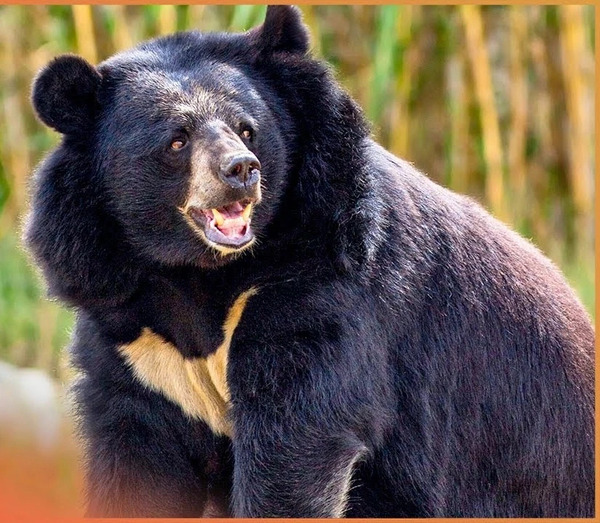
Black bears are the most widespread bear species across North America and are usually less aggressive than grizzlies or polar bears. They are generally shy and prefer to avoid humans. However, they can still be dangerous, especially if they feel cornered or threatened.
Size and strength: Black bears are generally smaller than grizzlies, weighing up to 600 pounds.
Temperament: Typically more timid and avoidant but can become aggressive if food or cubs are threatened.
Typical encounters: Black bears can be aggressive when it comes to food, often leading to conflicts in areas where they are fed by humans or come across campsites.
Conclusion: Black bears are less likely to attack than grizzlies or polar bears, but they can still be dangerous in certain circumstances.
When exploring bear species and their aggression levels, it’s essential to consider where they live, how they behave around humans, and the likelihood they’ll attack. Bears vary significantly in size, diet, and disposition. This guide compares the most well-known bear species—grizzly bears, polar bears, black bears, and brown bears—based on their aggression levels to determine which species poses the greatest risk to humans.
The bear species discussed here are the most prominent ones in terms of human encounters and notable behavior. Here’s a closer look:
Habitat: North America (especially Alaska, Canada, and some parts of the northwestern United States)
Characteristics: Grizzly bears are a subspecies of brown bears with a distinct hump of muscle on their shoulders, which gives them powerful forelimbs for digging and fighting. They have long claws, large body frames, and are known to be very territorial, which can lead to aggressive behavior.
Diet: Omnivorous, with a diet of berries, roots, insects, fish, and small to medium mammals.
Behavior: Highly defensive and territorial, especially with cubs around.
Typical Aggression Triggers: Startling them, coming too close to their cubs, or invading their territory.
Habitat: Arctic regions (primarily Canada, Norway, Russia, Greenland, and Alaska)
Characteristics: Polar bears are the largest bear species, built to hunt and survive in the Arctic's icy environment. They rely on a nearly all-meat diet, mostly hunting seals, making them one of the few carnivorous bears.
Diet: Primarily carnivorous, mainly feeding on seals, but will also hunt other mammals when seals are scarce.
Behavior: Known to stalk prey and are highly skilled hunters; can sometimes see humans as prey in remote areas.
Typical Aggression Triggers: Food scarcity, hunger, or curiosity in exploring new potential prey.
Habitat: North America (found in most of Canada, the United States, and some parts of Mexico)
Characteristics: Black bears are the smallest bear species in North America and tend to be more avoidant of humans than other bears. They vary in color from black to brown and even cinnamon shades.
Diet: Omnivorous, mainly foraging for plants, fruits, insects, and occasionally small animals.
Behavior: Less territorial and generally shy, preferring to flee from humans. However, they can become aggressive if they feel cornered or if they’ve learned to associate humans with food.
Typical Aggression Triggers: Feeling cornered, protecting cubs, or competing for food sources.
Habitat: Eurasia (Russia, Central Asia, and parts of Europe)
Characteristics: Closely related to grizzlies, brown bears can vary greatly in size depending on the region. They’re highly adaptable and can live in diverse environments from mountains to forests.
Diet: Omnivorous, feeding on a combination of plants, roots, fish, and animals.
Behavior: Brown bears are generally shy but can be aggressive if they feel threatened or encounter a human unexpectedly.
Typical Aggression Triggers: Surprises or unexpected encounters, territory protection, and when they have cubs nearby.
Here’s a table comparing these bear species in terms of their aggression levels, diet, habitat, and most likely triggers for aggressive behavior:
| Bear Species | Size & Weight | Primary Diet | Aggression Level | Likely Aggression Triggers | Danger to Humans |
|---|---|---|---|---|---|
| Grizzly Bear | 600-800 lbs (270-360 kg) | Omnivorous | High | Protecting cubs, territorial disputes, surprise encounters | Very dangerous when provoked |
| Polar Bear | 800-1,500 lbs (360-680 kg) | Carnivorous (mostly seals) | High | Hunger, seeing humans as prey | Extremely dangerous, especially in remote areas |
| Black Bear | 200-600 lbs (90-270 kg) | Omnivorous | Moderate | Food competition, cornering, protecting cubs | Moderate; usually avoidant but can be dangerous |
| Brown Bear | 300-1,200 lbs (140-540 kg) | Omnivorous | Moderate-High | Protecting cubs, territorial encounters | Can be dangerous if surprised or provoked |
Based on the comparison, polar bears and grizzly bears are generally considered the most dangerous bear species due to their size, strength, and typical aggression triggers.
Polar Bears are highly dangerous in Arctic regions where food scarcity may lead them to see humans as potential prey.
Grizzly Bears are considered the most dangerous in North America due to their territorial nature and willingness to defend cubs or territory.
Summary:
Polar Bears have a high predatory instinct and are extremely dangerous, especially in areas with limited food.
Grizzly Bears are highly aggressive in defending their territory and young, making them the most dangerous bear in North America.
Black Bears and Brown Bears are generally less aggressive but can still pose a threat if provoked or threatened
While all bears can be dangerous, polar bears and grizzly bears are the ones with the highest potential for aggressive behavior towards humans. Polar bears, due to their predatory nature and size, are especially dangerous in the Arctic. Grizzly bears are the most dangerous on land in North America due to their strong territorial instincts. By understanding each species and their typical behaviors, people can be better prepared to stay safe in bear territory.
Regardless of the bear species, here are some key safety tips for avoiding danger:
Keep a safe distance: Don’t try to get close for a better look or a photo.
Stay calm if you encounter a bear: Avoid running, which may trigger a chase instinct.
Make noise in bear territory: This will prevent you from surprising a bear.
Secure food: Don’t leave food out when camping; it can attract bears.
Know how to use bear spray: Bear spray can be a lifesaver if you find yourself in a dangerous situation with a bear
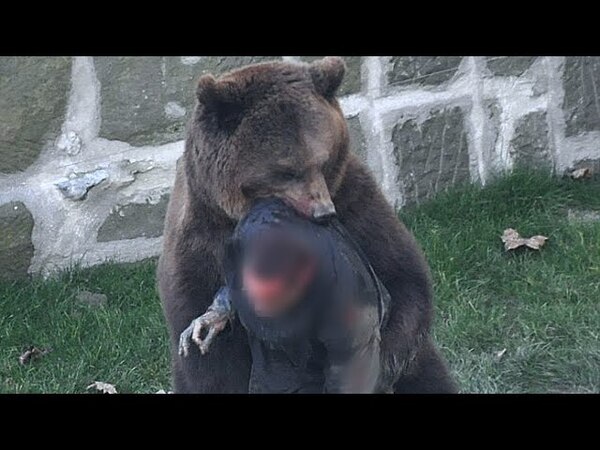
Bear attacks on humans are rare but can be severe when they occur. These incidents typically happen when a bear feels threatened, surprised, or is protecting its cubs. In North America, black bears, grizzly bears, and polar bears are the main types known to interact with humans. Each type has unique behavioral patterns, and bear attacks often differ accordingly:
Black Bears: Known to be generally timid, they might attack if they feel cornered or if a person comes too close to their food source. Fatal attacks by black bears are uncommon.
Grizzly Bears: Grizzlies have a more aggressive disposition, especially if defending cubs. They are responsible for most fatal bear attacks in North America.
Polar Bears: Encounters are rare due to their remote habitats, but polar bears are the most predatory toward humans, sometimes perceiving them as potential prey.
Each year, on average, around three fatal bear attacks occur worldwide. However, many more incidents involve non-fatal injuries due to defensive behavior.
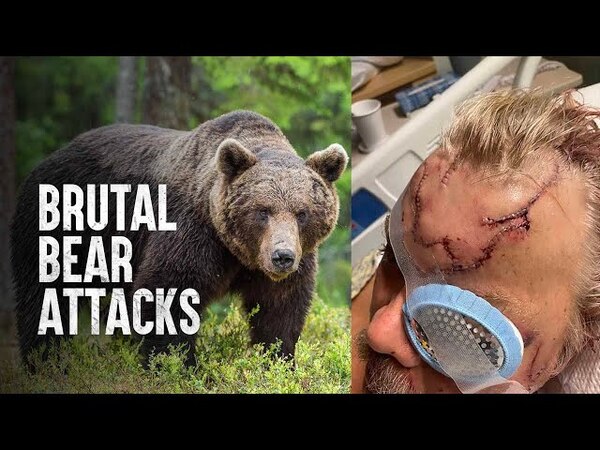
If you encounter a bear, staying calm and following a few key steps can help you avoid a dangerous situation. Here’s a detailed guide on what to do if you see a bear:
Don’t Panic: Bears are more likely to attack if they feel threatened or startled by sudden movements.
Take a Deep Breath: This helps you stay calm and focus on the best next steps.
Grizzly Bears: These bears have a distinctive shoulder hump, short, rounded ears, and a more aggressive demeanor.
Black Bears: They tend to have a straighter profile, larger ears, and lack a shoulder hump. Generally, black bears are more timid than grizzlies but can still be dangerous if threatened.
Polar Bears (if in the Arctic): Polar bears are large, with white fur, and are primarily carnivorous.
Close Encounter (<100 feet): If the bear is close, remain as still as possible and prepare to act cautiously.
Distant Encounter (>100 feet): If the bear is far away, slowly back away while keeping an eye on the bear without staring directly at it.
Running may trigger the bear’s instinct to chase, as many bears can easily outrun a human.
Keep Calm Movements: Move slowly, without turning your back on the bear, which shows the bear you are aware of it without showing aggression.
If the bear is advancing or appears curious, raise your arms slowly to appear larger.
Speak Calmly in a Low Tone: Let the bear hear your voice without shouting. This helps it recognize you as a human, which might deter it.
Bears may interpret direct eye contact as a threat. Instead, keep the bear in your peripheral vision while facing it calmly.
Move slowly backward, keeping your gaze on the bear without looking away. Avoid sudden movements, which could agitate the bear.
If the bear continues to approach or charges, use bear spray when it’s within 25-30 feet.
How to Use Bear Spray: Aim low and adjust for wind. Spray in short bursts, creating a cloud barrier that can deter the bear.
Curious Approach: The bear may stand on its hind legs to sniff the air or move toward you in a non-threatening way. This isn’t necessarily aggressive but requires caution.
Defensive Behavior: If the bear is grunting, huffing, or showing signs of irritation, it may feel threatened and could charge defensively.
Predatory Behavior (rare): If the bear seems to stalk you (especially polar bears in the Arctic), treat the situation as highly dangerous. Prepare to defend yourself if it attacks.
Stand Your Ground: Bears often perform bluff charges, so don’t turn and run.
Use Bear Spray: If the bear gets within the effective range, use the bear spray.
Grizzly Bears: If a grizzly attacks, it may be defending itself or its cubs. In this case, lie on your stomach, protect your head and neck, and play dead. Don’t move until the bear leaves.
Black Bears: If a black bear attacks, it may be predatory. Fight back using anything you can—a rock, stick, or even fists aimed at its face and nose.
Polar Bears: If attacked by a polar bear, fight back with all means necessary, as they may view you as prey.
Slowly Leave the Area: Once the bear is no longer in sight, leave the area promptly but carefully.
Report the Encounter: If the bear behaved aggressively, notify local wildlife authorities so they can monitor the area.
Stay calm and don’t panic.
Don’t run; slowly back away.
Make yourself appear larger and speak in a low voice.
Use bear spray if necessary.
If attacked, remember to play dead for grizzlies and fight back with black or polar bears.
Following these steps can help you stay safe and protect both yourself and the bear.
There are eight species of bears worldwide:
American Black Bear (Ursus americanus)
Brown Bear (Ursus arctos), including the Grizzly Bear and Eurasian Brown Bear
Polar Bear (Ursus maritimus)
Asian Black Bear (Ursus thibetanus), also known as the Moon Bear
Andean Bear (Tremarctos ornatus), also known as the Spectacled Bear
Giant Panda (Ailuropoda melanoleuca)
Sloth Bear (Melursus ursinus)
Sun Bear (Helarctos malayanus)
Each species is unique in habitat, diet, and behavior. While some, like the Giant Panda, primarily consume bamboo, others, like the Brown Bear, have an omnivorous diet.
Bears are protected at varying levels depending on species and region. Internationally, the Convention on International Trade in Endangered Species (CITES) regulates bear trade. The International Union for Conservation of Nature (IUCN) also classifies bear species based on their conservation status:
Endangered: The Giant Panda, Sloth Bear, and Sun Bear face significant threats and are protected under various national and international laws.
Vulnerable: Polar Bears and Andean Bears are considered vulnerable due to habitat loss, climate change, and poaching.
Least Concern: American Black Bears and Brown Bears have more stable populations, though some regional subspecies are still protected.
Bear meat has historically been part of traditional diets in certain cultures, especially in Northern Europe, Asia, and North America. Today, bear meat consumption is rare and highly regulated, primarily due to conservation efforts and health risks (e.g., trichinosis, a parasitic disease that can be present in bear meat). In the United States, hunting black bears for meat is allowed in some states with permits, though not all hunted bears are consumed as food.
Russia: In some regions, bear hunting for food or fur is restricted.
China: eating bear meat is strictly regulated by law. Most bear species, including the Asian black bear and the brown bear, are classified as protected animals, making it illegal to hunt, kill, or consume them. According to the Wild Animal Protection Law of the People's Republic of China, hunting, selling, purchasing, or consuming protected wildlife without authorization is considered a criminal offense, with penalties including imprisonment.
Additionally, China tightly controls the commercial use of bears. The bile of the Asian black bear has traditionally been used in Chinese medicine, leading to some bear farming for bile extraction. However, this practice is strictly regulated and monitored, with the aim of gradually reducing dependence on live bear bile to protect bear populations.
Japan: Hunting bears for meat is restricted in most areas, though some local exceptions apply.
European Union: Bear hunting and consumption are heavily regulated, with many countries banning the hunting of bears except for specific conservation or population management efforts.
United States: Regulations vary by state. While some states allow hunting for sport, others strictly prohibit it to protect bear populations.
Bear research primarily focuses on studying bear behavior, habitats, and the impacts of climate change. Significant research efforts include:
Polar Bear Research: Examining the effects of melting Arctic ice on hunting behaviors and population dynamics.
Panda Conservation: Efforts to increase Giant Panda populations through breeding programs and habitat protection.
Bear Rehabilitation: Research organizations work on rehabilitating orphaned bear cubs to reintroduce them into the wild safely.
Human-Bear Conflict Studies: Scientists study patterns of human-bear encounters to improve co-existence strategies.
International organizations like the World Wildlife Fund (WWF) and Bear Trust International support bear research, conservation, and public education programs.
Bears have had a longstanding role in human art, folklore, and symbolism. They are often symbols of strength, protection, and resilience in cultures worldwide:
Native American Cultures: Bears are revered as powerful spiritual symbols, representing healing and protection.
Chinese Culture: The Giant Panda has become a national symbol of peace and harmony, often used in cultural festivals and as an emblem of wildlife conservation.
European Folklore: In Nordic and Slavic traditions, bears are frequently featured in folklore, often as wise, noble, or fierce creatures.
In modern media, bears remain popular, symbolizing the wilderness and resilience, while also featuring in children's stories, logos, and mascots.
In the wilderness, all bears should be treated with respect and caution. Grizzlies and polar bears are generally considered the most dangerous, each in its own habitat. By staying informed and following safety guidelines, you can better avoid risky encounters with these majestic but powerful creatures.
By following these tips and understanding bear behavior, you can better prepare yourself for a safe adventure in bear country. Stay safe, and respect these amazing animals from a distance!
animal tags: bear
We created this article in conjunction with AI technology, then made sure it was fact-checked and edited by a Animals Top editor.